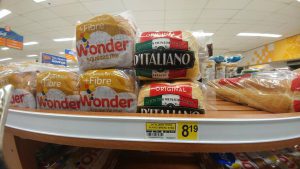Wandering along a narrow back alley behind Saint-Urbain Street, peering over the rusty fences, it’s surprisingly easy to slip back a century — to hear the clang of feet racing up and down the spiral metal staircases between cold-water flats that once housed a dozen people rather than two or three McGill students; to feel the bite of winter seeping into the unheated rooms; to imagine the pungent aroma of condensed humanity, frying garlic, and… well.. what is that smell, anyway?
“Pickles,” says Zev Moses, a slim and earnest 34-year-old with horn-rimmed glasses. The backyard we’re peeping into, he explains, is where Esther Witenoff — now better remembered as Mrs. Whyte, the eponym of Canada’s largest pickle producer — started brining her pickles in casks from Seagram’s distillery in the 1930s. Moses, the director of the nearby Museum of Jewish Montreal, digs into his satchel and pulls out a handful of doggy-bagged Mrs. Whyte’s to pass around. “Straight from the cask,” he says, “never been in a bottle.” The burst of crisp, tangy dill in my mouth completes the feeling of sensory time travel.
I’m at the epicentre of traditional Jewish Montreal, the legendary heartland of bagels and smoked meat and — in spirit, at least — Leonard Cohen. Since the poet and songwriter died in November 2016, dutiful pilgrims have been retracing the steps between his favourite haunts, such as the Main Deli Steak House on St-Laurent. (“He sat right there,” the waitress informs me, gesturing toward the front, when I pop in for a pickled-tongue sandwich that evening. “Second booth on the right.”) It’s a circuit that, these days, draws more tourists and Toronto expats than Montreal Jews, who’ve mostly moved on to other parts of the city and beyond. The rich history of the neighbourhood is important, says Moses, whose museum opened in a former garment factory on St-Laurent in 2016. But it’s not the whole story. Jewish Montreal, he says, is in the midst of a renaissance that’s as diverse and vigorous as the community’s heyday a century ago — and as delicious, too.
The first Jews arrived in Montreal in the 1760s, shortly after the British conquest. But the wave of Eastern European immigration that begat Schwartz’s Montreal Hebrew Delicatessen and Mordecai Richler started in the late 1800s. Between 1901 and 1931, Quebec’s Jewish population mushroomed from 7,000 to 60,000, and Yiddish became Montreal’s third most spoken language. The community settled along St-Laurent, then known as “the Main,” which was the de facto dividing line between the French in the eastern part of the city and the English in the west. As we wander down the street, Moses points out reminders of its past: The Star of David engraved alongside the city’s old official flag on an ornate building once occupied by a Yiddish newspaper; the incongruously elegant porno theatre that, when it opened more than a century ago, showcased Yiddish vaudeville acts.
It’s in this neighbourhood — the Plateau Mont-Royal and nearby Mile End — that the great rivalries of Jewish Montreal linger on. Fairmount or St-Viateur? I squeezed into both places and scarfed down bagels freshly yanked just moments earlier from the wood- fired oven, savouring the distinctively sweet chewiness. Montreal-style bagels, unlike their New York City cousins, have egg in the batter and are parboiled in honey-sweetened water — and they need to be fresh. I came away a St-Viateur convert, and with a new understanding of why the city’s expats rush straight to their bagelry of choice when they return. “When there’s a holiday in Ontario, it’s crazy here,” says Saul Restrepo, who started working at St-Viateur as a 16-year-old in 1981. “People come, and they don’t order a half-dozen — they order five dozen, six dozen.”








